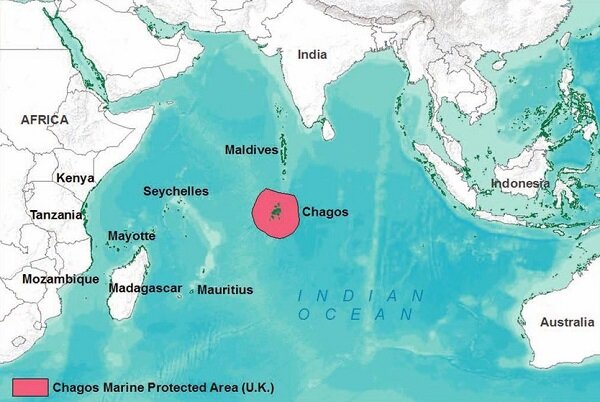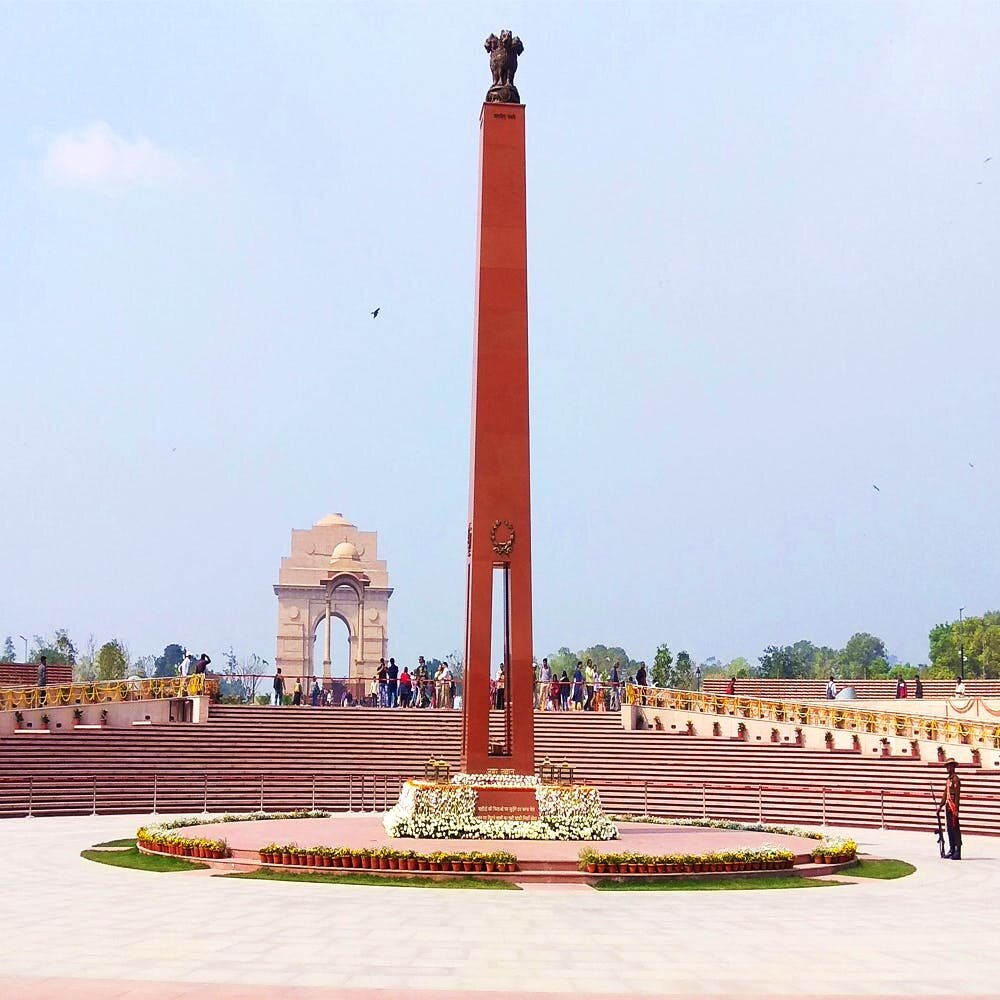UK Asked to Return Chagos Islands to Mauritius
International Court of Justice (ICJ) has asked the United Kingdom to return the Chagos Archipelago back to Mauritius.
- ICJ has said that continued British occupation of the Chagos archipelago is illegal.
Court’s Advisory Opinion
- ICJ in its advisory opinion has said that:
- The process of decolonization of Mauritius was not complete when the country was given independence in 1968 as the Chagos Archipelago was separated.
- The UK should give up its administrative control over the Chagos Archipelago as rapidly as possible.
Background
- The case was referred to the ICJ, which hears legal submissions over international boundary disputes, after an overwhelming vote in 2017 in the UN general assembly.
- In its submission to the ICJ last year, Mauritius argued it was coerced into giving up the Chagos Islands.
- That separation was in breach of UN resolution 1514, passed in 1960, which specifically banned the breakup of colonies before independence.
- The UK government argued that the court did not have jurisdiction to hear the case.
Likely Impact
- The United Kingdom: Although the decision by the ICJ is only advisory, the judgment is a blow to the UK’s prestige on the world stage.
- The UN general assembly vote in 2017, revealed the waning UK’s international influence as many European Countries countries did not support the UK and traditional allies such as Canada abstaining.
- Mauritius: The government of Mauritius has welcomed the decision and said that is is a “historic moment in efforts to bring colonialism to an end, and to promote human rights, self-determination and the international rule of law”.
- On US Military Base: The opinion is unlikely to impact the U.S. military base as Mauritius has said in the UN General Assembly that it is committed to the continued operation of the base in Diego Garcia under a long-term framework.
Chagos Archipelago
- The Chagos Archipelago, island group in the central Indian Ocean, located about 1,000 miles (1,600 km) south of the southern tip of the Indian subcontinent.
- In the 19th century, Chagos were governed from Mauritius, which was a British Colony.
- The UK retained possession of the Chagos archipelago, which includes the strategic US airbase of Diego Garcia, after Mauritius gained its independence in 1968, by paying Mauritius more than £4m for the islands.
- The U.K. government refers to it as British Indian Ocean Territory or BIOT.
- About 1,500 native islanders were deported from the Diego Garcia island in Chagos archipelago so that it could be leased to the US for the airbase in 1971.
- Mauritius claimed that it was forced to give up the islands in 1965 in exchange for independence, which it gained in 1968.
India’s Stand
- India has supported Mauritius stand on the Chagos Archipelago.
- India in its submission to ICJ has said that the Chagos Archipelago has been and continues to be with Mauritius and demanded sovereignty over the Chagos Archipelago from Britain.
- India stayed committed to its Indian Ocean neighbor Mauritius, as well as its anti-colonial credentials.
Important Fact For Prelims (26th February 2019)
Global Digital Health Partnership Summit
- Union Minister of Health and Family Welfare has inaugurated the ‘4th Global Digital Health Partnership Summit’ in New Delhi.
- The global intergovernmental meeting on digital health is being hosted by the Ministry of Health and Family Welfare in collaboration with World Health Organization (WHO) and the Global Digital Health Partnership (GDHP).
Global Digital Health Partnership
- The Global Digital Health Partnership (GDHP) is an international collaboration of governments, government agencies and multinational organisations dedicated to improving the health and well-being of their citizens through the best use of evidence-based digital technologies.
- It was established in February 2018, to provide an opportunity for transformational engagement between its participants.
- Australia was the host country for the inaugural summit in 2018.
Rail Drishti Dashboard
- The government has launched Rail Drishti dashboard, encompassing all the digitisation efforts in Indian Railways and promoting transparency and accountability.
- The dashboard (raildrishti.cris.org.in) brings information from various sources on a single platform and gives access to key statistics and parameters to every citizen of the country.
- It contains information related to passenger and freight trains and links to live feeds of IRCTC kitchens.
- The available information has been categorized under 15 sections on the Dashboard.
Stratocumulus Clouds
- A recent study has warned that increasing Carbon Dioxide levels can warm the Earth dramatically and can lead to hothouse conditions.
- The Stratocumulus clouds that reflects sunlight back into space could break up and vanish if CO2 in the atmosphere triples.
- Stratocumulus clouds cover about 20% of subtropical oceans and when they disappear, Earth warms dramatically, by about eight degrees. This is in addition to the global warming that comes from enhanced greenhouse concentrations alone.
- A temperature increase of that magnitude would melt polar ice and lift sea levels dozens of meters.
Types of Clouds
- According to their height, expanse, density and transparency or opaqueness clouds are grouped under four types:
- Cirrus: Cirrus clouds are formed at high altitudes (8,000 - 12,000m). They are thin and detached clouds having a feathery appearance. They are always white in colour.
- Cumulus: Cumulus clouds look like cotton wool. They are formed at a height of 4,000 - 7,000 m. They exist in patches and can be seen scattered here and there. They have a flat base.
- Stratus: These are layered clouds covering large portions of the sky. These clouds are generally formed either due to loss of heat or due to the mixing of air masses with different temperatures.
- Nimbus: Nimbus clouds are black or dark gray. They form at middle levels or very near to the surface of the earth. These are extremely dense and opaque to the rays of the sun.
- A combination of these four basic types can give rise to the following types of clouds:
- High clouds – cirrus, cirrostratus, cirrocumulus;
- Middle clouds – altostratus and altocumulus;
- Low clouds – stratocumulus and nimbostratus and clouds with extensive vertical development – cumulus and cumulonimbus.
National War Memorial
- Recently, Prime Minister has inaugurated National War Memorial in New Delhi.
- The memorial is located at the India Gate complex in New Delhi.
- The layout of the structure comprises four concentric circles, named:
- the "Amar Chakra" or Circle of Immortality,
- the "Veerta Chakra" or Circle of Bravery,
- the "Tyag Chakra" or Circle of Sacrifice and
- the "Rakshak Chakra" or Circle of Protection.
- The busts of 21 awardees of the Param Veer Chakra are also installed at the Param Yoddha Sthal.
- The National War Memorial also commemorates the soldiers who participated and made supreme sacrifices in United Nations peace-keeping missions, Humanitarian Assistance Disaster Relief (HADR) operations, counterinsurgency operations and Low-Intensity Conflict Operations (LICO).
- Since Independence, more than 25,000 personnel have been martyred during the India-China War in 1962, the Indo-Pakistan wars in 1947, 1965 and 1971, the Indian Peace Keeping Force operations in Sri Lanka and the conflict in Kargil in 1999.
- The proposal for a National War Memorial was first made in the 1960s.
- In 2015, the cabinet gave in-principle approval for war memorial construction at India Gate Complex, New Delhi.
- In 2016, after an international competition to design of the Memorial, Chennai-based architecture company WeBe Design Lab was selected.

